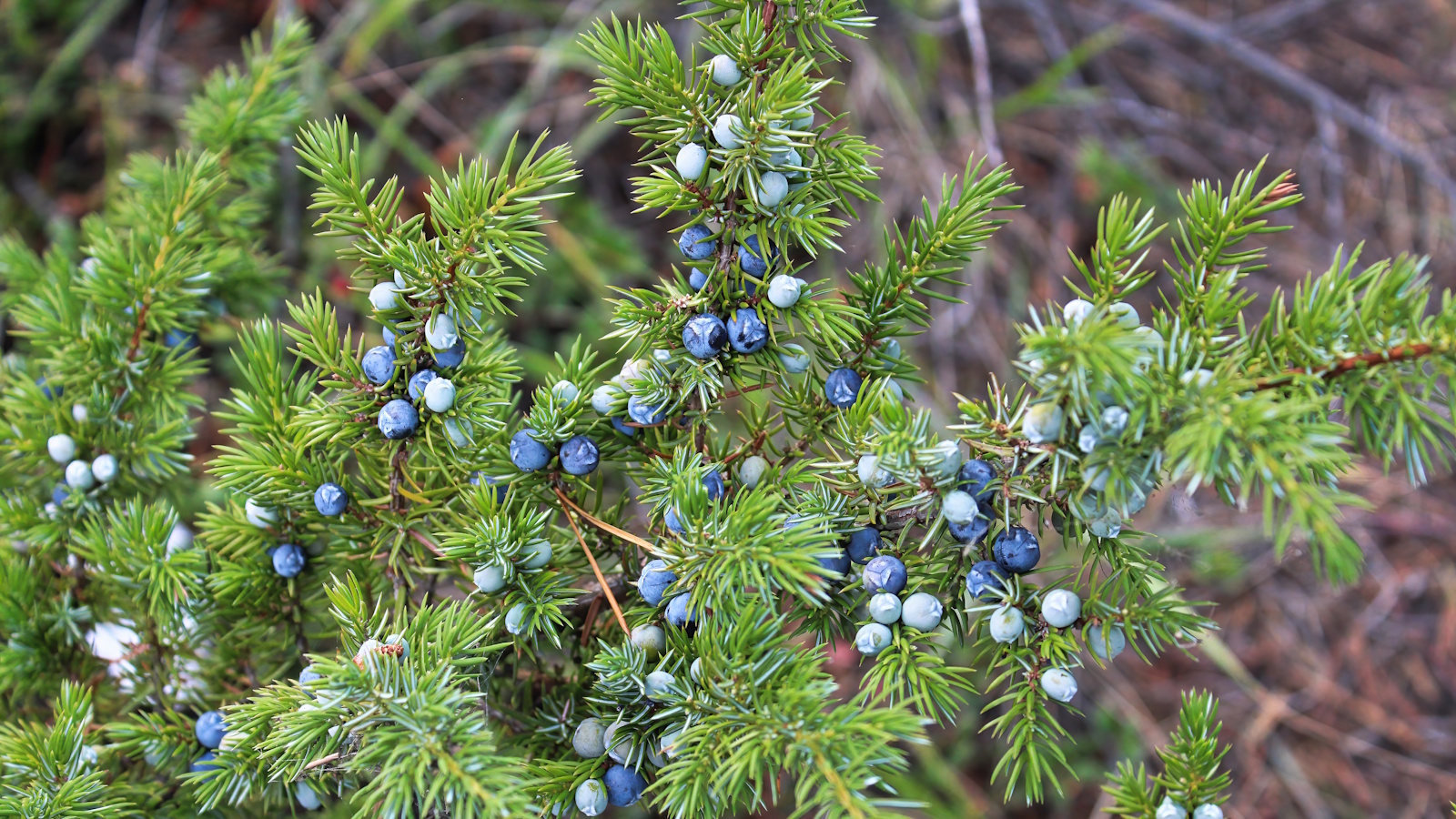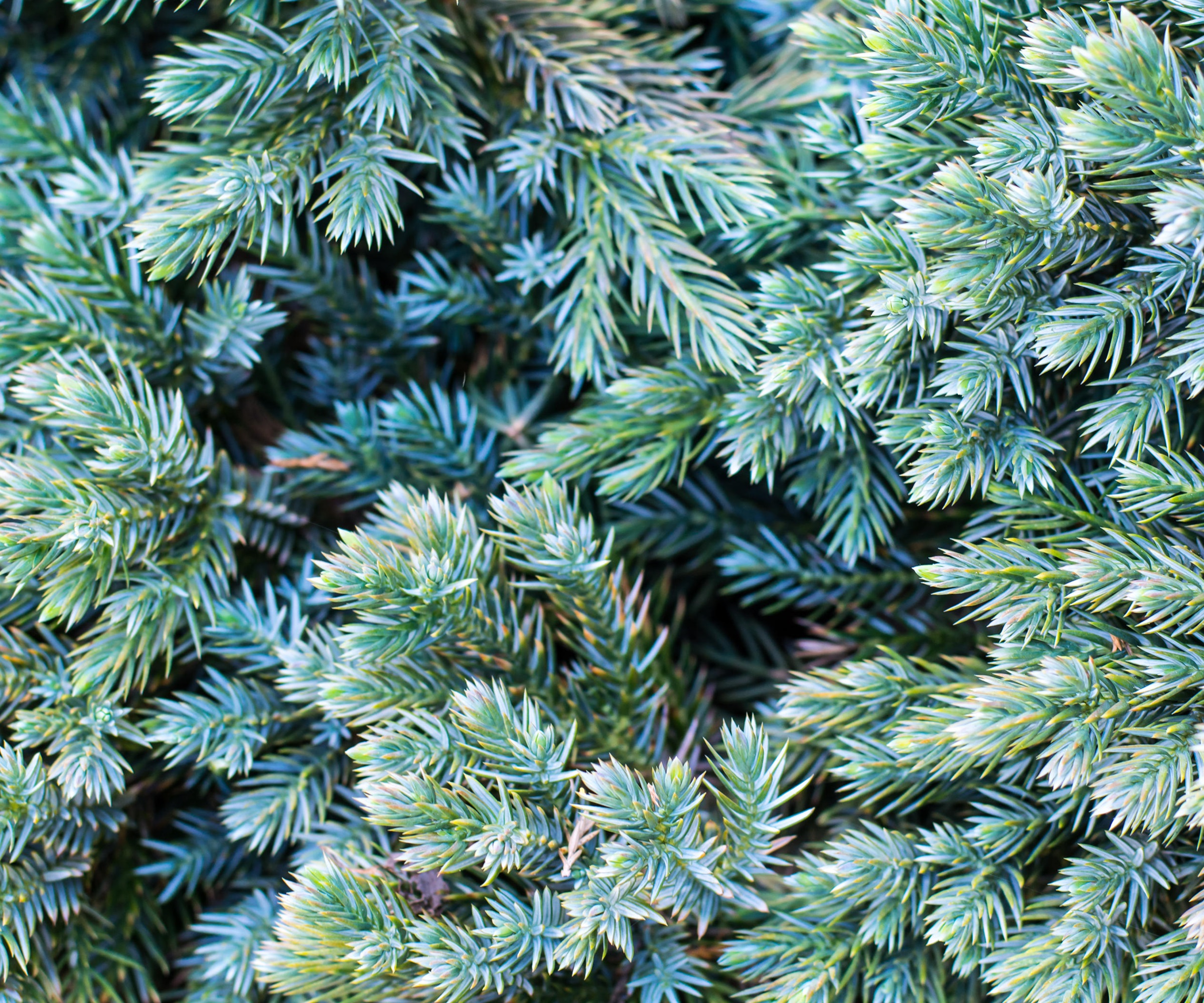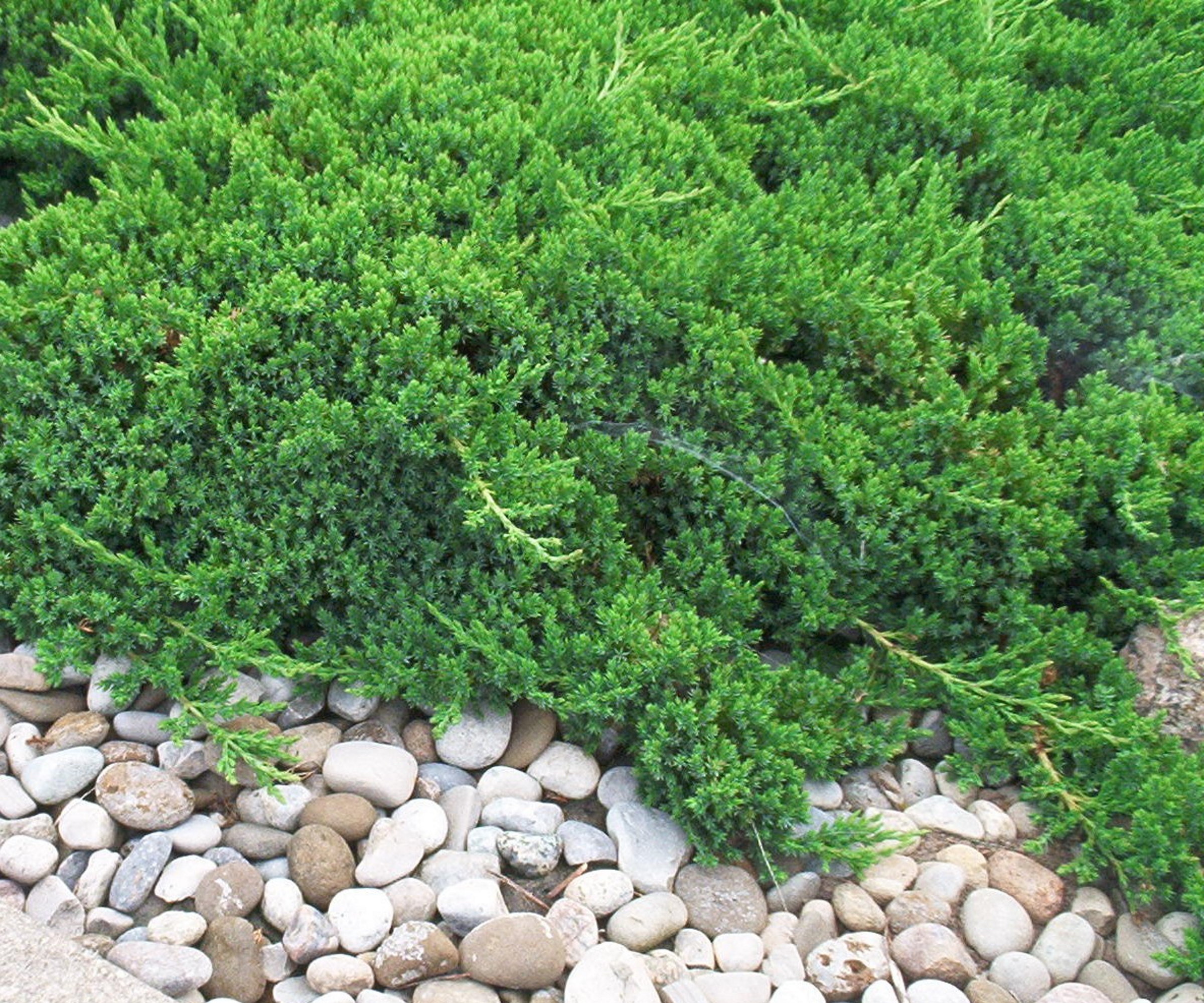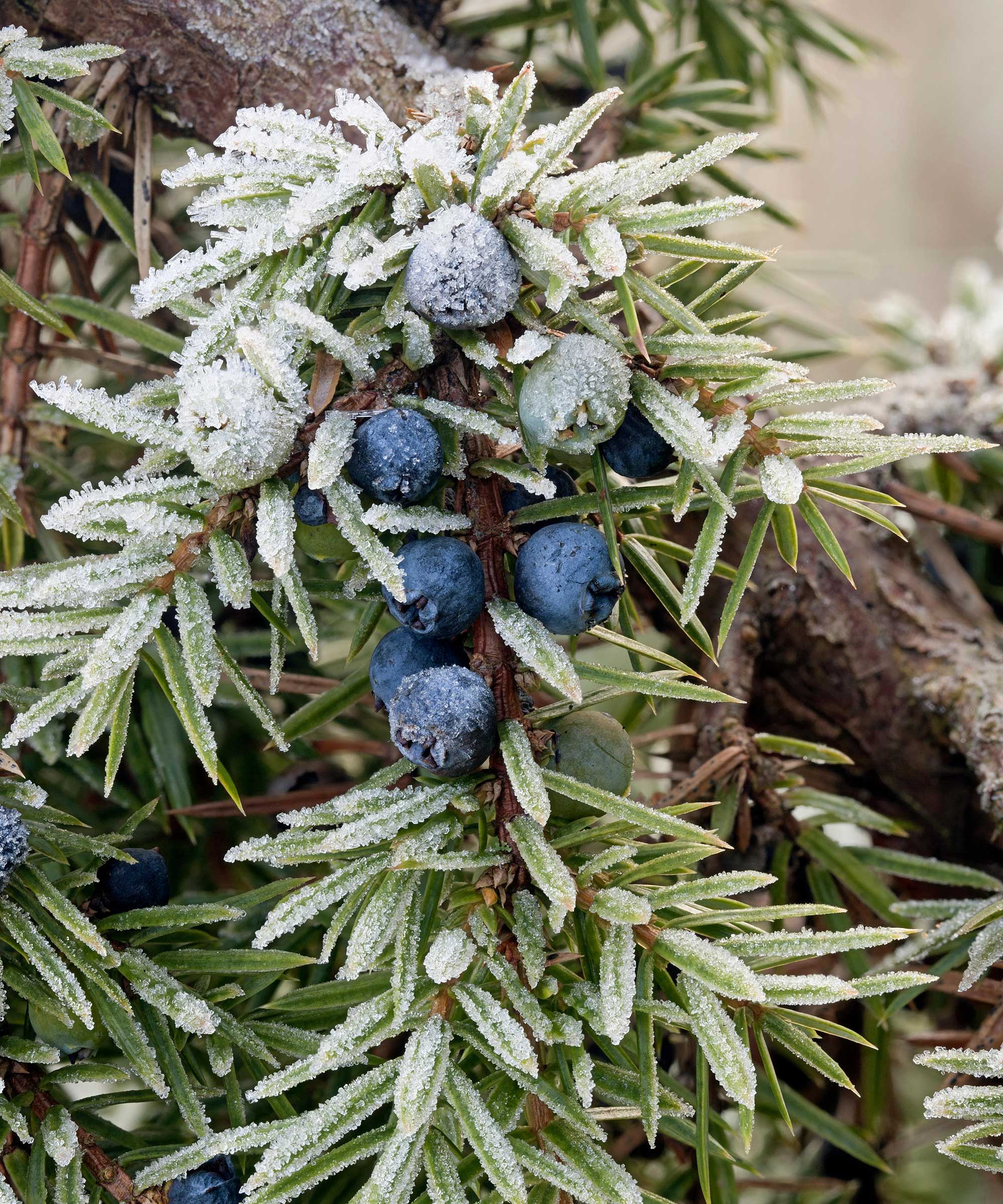
Creeping juniper, Juniperus horizontalis, is a low-growing evergreen plant native to North America, found throughout much of Canada and the northern regions of the United States.
Juniper plants are members of the cypress family, or Cupressaceae, commonly referred to as conifers. While the word conifer might conjure up images of large, conical evergreens that soar upwards, this plant family is diverse, with many low-growing species, including creeping juniper, proving to be useful in garden borders with its limited size and spread.
As you might be able to tell from the naming of this plant, creeping juniper plants tend to crawl and ramble along the ground, growing horizontally as opposed to vertically. So, if you are looking for a low-growing native evergreen that is both resilient and hardy, this ground cover plant is one to consider.

How to grow creeping juniper
If you are looking to incorporate native planting into your yard this year, creeping juniper is a low-maintenance option to consider. With a low growing habit, this tough evergreen ground cover is useful for lining pathways or filling beds and borders under large trees or shrubs.
Growing habits of creeping juniper

'Junipers are some of my favorite evergreen pine trees to use in the garden,' says Sam Niemann, garden expert and founder of Grown by Design, a boutique landscape design firm based in San Diego, and Bleume, a plant fertilizer start-up.
'There are dozens of species of juniper and many varieties to choose from. Some junipers are very large trees reaching over 100 feet tall at maturity and some are quite small, like creeping junipers, reaching only 1 or 2 feet high but spreading up to 10 feet wide.
'While each juniper species will have specific needs, most are hardy down to US hardiness zone 4,' Sam adds, making this an ideal ground cover plant that can handle cool, northerly climates found in Montana, Alaska, North Dakota and Wyoming.
'I particularly like junipers because they grow equally well in colder zones as they do in more temperate climates,' Sam continues. 'While they thrive in chilly areas, they also enjoy dry, sunny locations too,' and are considered some of the best low maintenance drought tolerant plants.
What's more, creeping juniper is relatively pest-free, ideal if you are seeking deer-resistant ground cover plants or rabbit-repelling plants. The aromatic juniper needles are not liked by these mammals, and so can help to keep unwelcome visitors out of your plot.
Creeping juniper live starter plants are available to order from Amazon.
Growing best in US hardiness zone 3 to US hardiness zone 8, this 'blue chip' creeping juniper will quickly fill borders and beds in your yard with striking blue-green hues.
Growing advice for juniper

Soil: Creeping juniper is incredibly versatile and can be grown in most soils. 'They prefer well-draining spots, however, so avoid planting in waterlogged yards,' Sam adds.
Light: Creeping juniper plants are considered full sun ground cover plants, thriving in bright and open situations. While they will tolerate part shade, planting in a position with six or more hours of sunlight will produce the best results. In shadier yards, creeping juniper will prove to be slow-growing.
Watering: When your plants are young and settling into your yard, you will want to carry out deep watering every week or two in the first year. Once established, creeping juniper is remarkably drought-tolerant, with rainfall providing all the water the plant needs. In very hot summers, give your plants some water once a week to keep them looking their best.
Fertilizing: You do not need to fertilize creeping juniper, as this plant thrives in poor soils. Consider mulching your borders every fall, which will help to improve the soil structure and feed your plants, but beyond this, no application of feed is required.
Pruning: 'As with most shrubs and trees, I prefer to site junipers in locations where they can reach their full size with minimal pruning required,' says Sam. 'Typically, the only pruning I do on my junipers is to maintain the general shape or cut off any dead growth. Luckily, if pruning is necessary, creeping junipers take quite well to being pruned in spring or fall.'
Toxicity: Creeping juniper is not considered toxic to dogs or cats, although if ingested in large quantities they can cause stomach upset. Juniper foliage can also cause skin and eye irritation, so it is best to wear gardening gloves, available from Amazon, when pruning or handling this species. While some juniper berries are used for flavoring foods and drinks, it is not recommended to use the berries of creeping juniper for this purpose.
FAQs
Can you use creeping juniper as a lawn alternative?
While creeping juniper will happily cover large swathes of ground in your yard, it will not respond well when walked over. For this reason, if you are seeking a lawn alternative, consider planting a tapestry lawn, with plants such as sedum, clover or green-and-gold, that fair better when walked on.
Do all creeping juniper plants produce berries?
Some creeping juniper varieties can produce berries in the summer and fall. However, it is only the female plants that do so, so it is best to double-check the variety before purchasing or ask at your local nursery if you are unsure. Importantly, creeping juniper is a dioecious plant, which means that there are both male and female plants of the same species. To produce berries and seeds, the pollen from the male plant must fertilize the female plant, which will readily happen in the wild where masses of plants grow side by side. However, this can be slightly harder to do in a backyard if you only grow one form of creeping juniper.
While creeping juniper is just one low-growing form, there are many hundreds of other taller juniper species to consider. 'One of my favorites is the ‘Spartan’ juniper,' Sam says. 'This variety is naturally conical in shape and reaches 15 feet tall. I am a fan of ‘Spartan’ because of the plant’s dense growth habit and fast growth rate.
I also particularly like the ‘Blue Point’ juniper. This variety is similarly sized to ‘Spartan’, topping out at about 12 feet tall, but has bluish-green foliage. Both ‘Spartan’ and ‘Blue Point’ junipers make excellent candidates for pruning into topiaries.'







